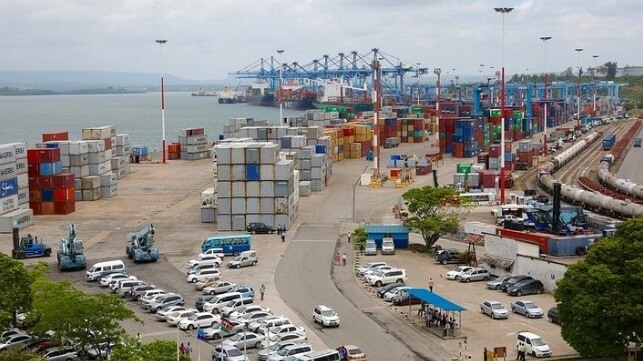Kenya Seeks to Generate $10B Leasing Five Ports to Private Investors

Authorities in Kenya are seeking private investors to take over the operations and management of five critical ports, a development aimed at bolstering the competitiveness of the maritime sector and generating $10 billion for the financially beleaguered government.
Kenya has historically been the gateway to the East Africa region through the port of Mombasa but is facing increasing competition from neighboring Tanzania. The government is reviving a previously dismissed plan to concession sections of Kilindini Harbour, Dongo Kundu port, Kisumu port, and Shimoni Fisheries port to investors through a public-private partnership.
Through the Kenya Development Corporation (KDC), a state-owned development authority, the Kenyan government also intends to concession the Lamu port which continues to be a laggard with less than 25 ships docking at the facility in three years of operation. During the period, the port in which Kenya invested $367 million to build the first three berths and which was touted to be a major transshipment hub when it was commissioned in May 2021, handled less than 2,500 TEU.
In order to inject new life into the Lamu port and unleash the potential of the other four ports the Kenya government is renewing the plans to bring on board private investors to operate the facilities. Included in the proposal is the Kisumu port which they believe can become a major petroleum products transportation hub.
KDC has prepared a detailed prospectus to attract private investors to take up the operations and management of the ports with the Kenya Ports Authority and the Lapsset Corridor Development Authority being designated as the implementing agencies of the planned leasing.
“The ports are confronted with the challenge of congestion and, therefore, higher dwell times for cargo. The ports will be leased/concessioned to private operators with a landlord-type port management system,” said KDC in the prospectus.
The decision by the current Kenyan administration of President William Ruto to bring on board private investors represents a change of heart after similar plans by the previous administration was abruptly shelved after sparking controversies. There had been allegations of illegalities, with global ports operator and logistics giant DP World caught in the middle.
In the latest attempt, Kenya is not only hoping to attract private operators to take over the operations and management of the five ports but is also seeking $304 million worth of private investment for the facilities.
Part of the investments will be directed toward the development of agribulk and liquid bulk terminals at the port of Lamu as well as storage tanks to enhance its competitiveness thus attracting more shipping lines. In its prospectus, KDC is suggesting the potential increase in the port’s cargo volumes by seeking private investments in the agribulk and liquid bulk terminals that are set to cost $210 million and $94 million respectively.
“Agribulk import demand at the port of Lamu is projected to increase from 547,000 tonnes in 2023 to 3.3 million tonnes in 2045. The investment will enable facilitation of import and export to meet the demand of grain requirements, creation of job opportunities,” said KDC.
The agency is also seeking investments in storage tanks at the port at a cost of $30 million to meet the expected demand for refined oil product imports and crude oil exports. They project volumes to increase from 6.8 million tonnes in 2020 to 19.3 million tonnes in 2045. Refined oil imports are forecast to increase from 395,000 tonnes in 2023 to 2.6 million tonnes in 2045, while crude oil exports are expected to increase to three million tonnes.
The Kenyan government contends that leasing the ports to private investors will enhance the competitiveness of the northern corridor that serves not only Kenya’s hinterlands but also landlocked neighboring countries of Uganda, Rwanda, Burundi, South Sudan, and parts of the Democratic Republic of Congo (DRC).
Increasing bottlenecks on the corridor that has been the main gateway to East Africa through the port of Mombasa have in recent times come under intense competition from the central corridor in Tanzania as more importers and exports opt to use the port of Dar es Salaam.
Kenya National Bureau of Statistics data shows the volume of cargo handled by Mombasa port dipped for the first time in five years with total cargo dropping to 33.74 million metric tonnes in 2022 from 34.76 million tonnes the previous year. The 2.9 percent drop pushed the volumes to the lowest levels since 2018 when it stood at 30.92 million tonnes.
During the 2021/2022 financial year, Dar es Salaam port recorded a 10.3 percent increase in throughput handling 17.85 million tonnes, up from 16.19 million tonnes in the previous financial year, according to Bank of Tanzania data.
The fact that Kenya is losing its edge to Tanzania is evident after Dar es Salaam port overtook Mombasa port in the latest World Bank ranking of the world’s most efficient ports. The 2022 Container Port Performance Index ranks Mombasa at position 326 against Dar es Salaam at position 312 from a total of 348 ports used in the survey.
